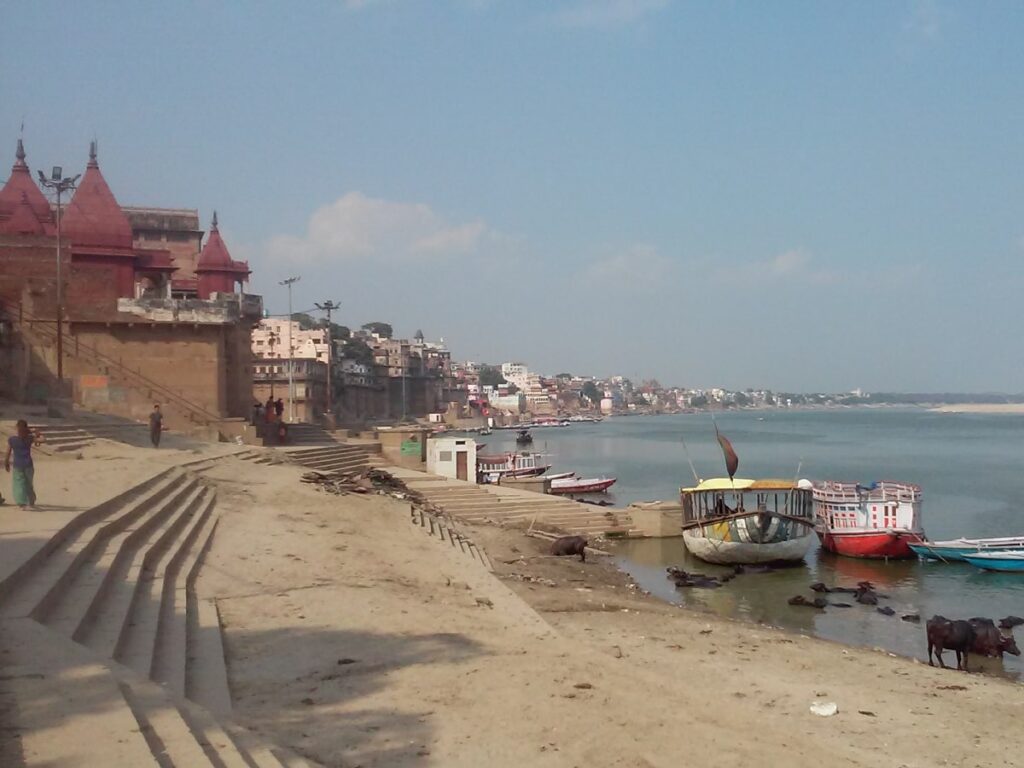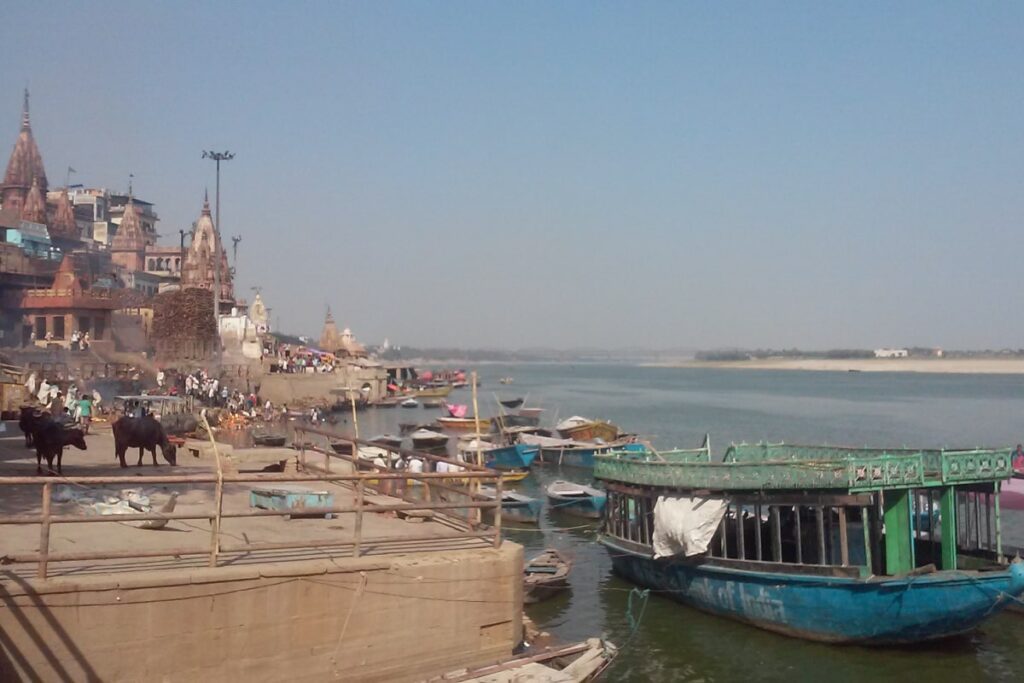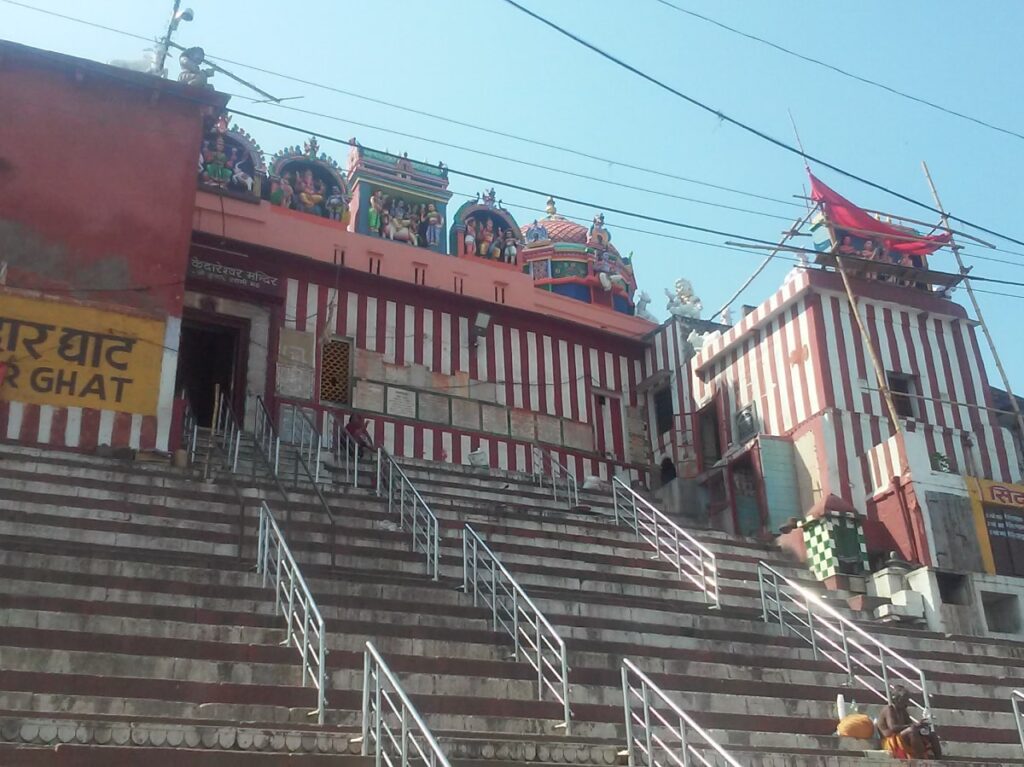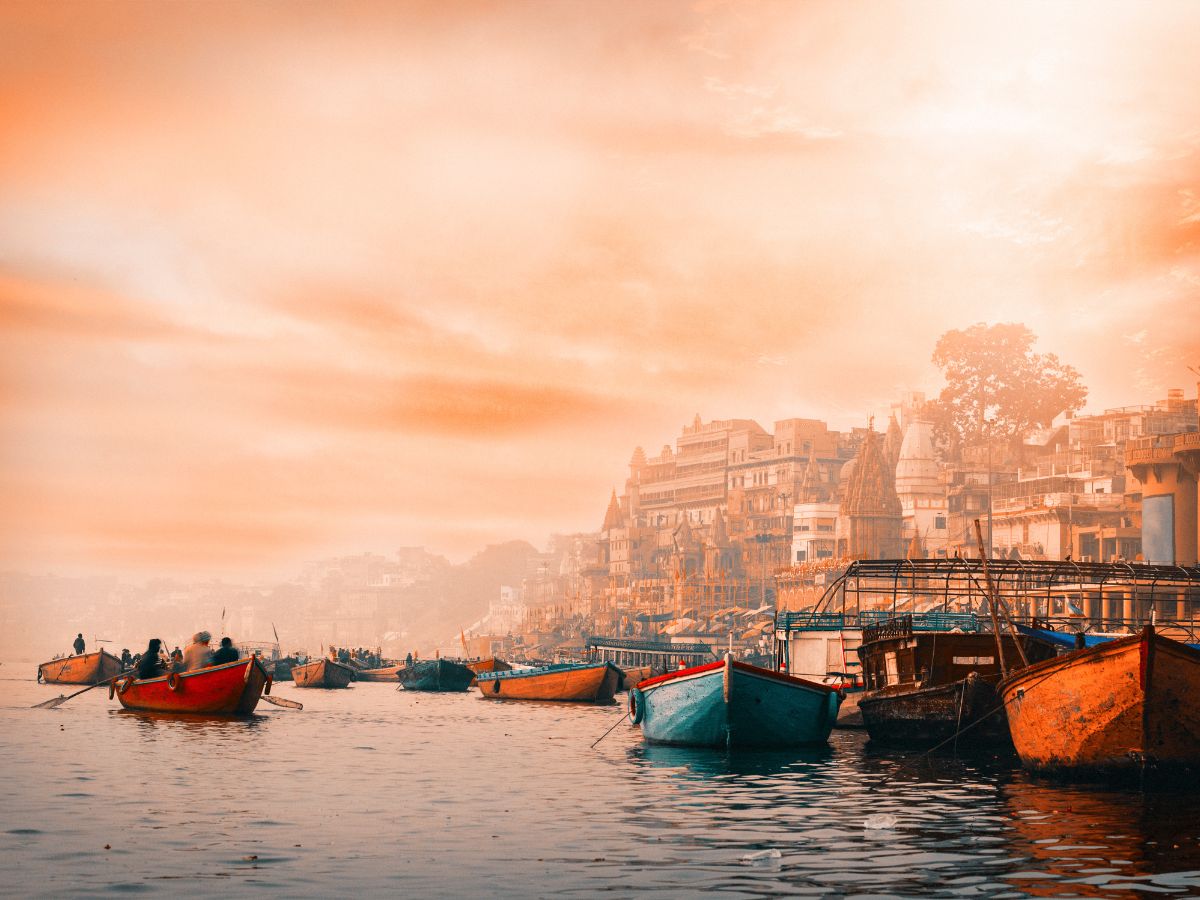India is a country that thrills, surprises and sometimes shocks visitors on a daily basis and that is all part of its charm and why people visit it. The big cities like Mumbai and Delhi are frenetic, manic urban jungles. However there is one place that travellers in India speak of above all others as being the biggest culture shock and most intense travel experience.
Varanasi – The ultimate attack on the senses
Varanasi. The mere mention of the word is enough to send a shudder down the spine of some. However in the ultimate country of paradoxes, it somehow makes sense that this madhouse of a town should lie idyllically on the banks of the River Ganges.
On quiet stretches of the embankment, you get a rare glimpse of the calmer side to life here. People stroll along by the side of the river, cows cool off in the water and the sun reflects off the temples and ghats that hug the shore. When viewed from the relative calm of the Ganges, its utterly unique beauty can truly be appreciated but in a city that is nearly 1000 years old, there is much more to it than initially meets the eye.

Anyone who has spent much time backpacking India will know the peace and tranquility never lasts for long. Varanasi is frequently described as ‘an attack on all the senses’ in travel guides and that is absolutely the case. There are always unexpected sounds, smells and sights just around the corner and you never know what is coming next.
The narrow winding streets of the old town, a short walk uphill from the river bank are a hub of life. The intense smell of rich spices lingers throughout the streets, only to be regularly and unpleasantly overpowered by anything from motorbike fumes to animal feces. They are a maze that is almost impossible to navigate and involves dodging everything from eager tradesmen, temple touts, holy cows and swinging monkeys.
The newer parts of the city are comparable to other towns across the country in that the streets are dusty and the constant flow of traffic and people is overpowering to some but this being Varanasi, it’s another couple of notches up.
That never-ending sense of life and activity that continues from before dawn to past dusk is a mesmerising sight but one probably best appreciated and enjoyed with a lassi in hand at one of the many shops (the most famous of which is Blue Lassi).
The City where Life meets Death
What really sets Varanasi apart from other cities in India and indeed the rest of the planet is how openly the cycle of life and death is played out. Nowhere else in the world do the two seem so deeply intertwined.
You can be going about your daily affairs one moment and then out of nowhere a group of people will pass carrying the corpse of a loved one down to the riverbank. Only the tourists blink an eye because this sacred city has been the final resting place for Hindus for centuries. For the locals in one of the world’s oldest continuously inhabited cities, the practice is just a routine part of life in Varanasi.
Once at the riverbank, funeral rituals are performed and the bodies are cremated in full view of all and sundry. Dying in Varanasi is believed to bring salvation so many Hindus make the trip from other parts of India when they are nearing death. Once the cremations are complete, families clamber onto boats that head out into the river where the ashes of the person who has just passed are released.

However what is most striking about it all, is that life will be continuing to go on as normal all around. People bathe in the Ganges, which has unquestionably seen cleaner days, just a matter of metres away from where the dead are being cremated.
Children play and friends share a joke and to the outsider at least you are left with this immense and lasting impression of life and death being played out before your very eyes.
Varanasi Cremation Etiquette
This is a bit of a sensitive issue and one that tends to divide opinion. In most countries, sitting in on a complete stranger’s funeral isn’t exactly the most normal thing to do.
In Varanasi though, the dead are cremated in public and every day travellers watch on as corpses are burned and the ashes then deposited in the Ganges. This is an essential stop on any Varanasi ghat tour whether you’re exploring independently or as part of a Varanasi walking tour group.
Provided you act in a sensible and respectful manner, you won’t cause offence. However some tourists in Varanasi take it upon themselves to capture the funeral rituals on video or camera, sometimes going right up to the burning corpses to get the best shot.
Clearly this is not remotely appropriate when people are saying goodbye to their loved ones so don’t do it. Taking pictures from a distance is seen as more of a moral judgement.
Backpacking Varanasi – Scams to watch out for
This city is absolutely not a relaxing, hassle-free place. Some of the main Varanasi scams revolve around the cremation rituals, particularly at the main cremation ghat (Manikarnika Ghat) where people will try to take you to a viewing point and force you to pay to observe them. This shouldn’t happen so ignore them. There are many points along the riverbank where you can sit on the steps and respectfully observe.
There are also some people who will try to charge you for taking photographs or will pretend to be family members of the deceased and claim they need money for the wood used in the rituals.

Throw in a bunch of fake tour guides and those who will try to vastly overcharge you for boat or taxi rides and you’ve got more than your fair share of things to be wary of.
These are just some of the common scams and there is a good chance you will experience at least one of them whilst in Varanasi. Try to stay calm and walk away if you are persistently approached by someone in the street.
Read more – For more on travel in India, check out our look at where to go in Rajasthan. If you’re looking for a rather more chilled out South Asian travel experience, check out our guide to Sri Lanka backpacking which features a 3 week itinerary and tips for exploring India’s smaller southern neighbour.
This article on visiting Varanasi as a backpacker was first published in August 2016 and updated in July 2023.

